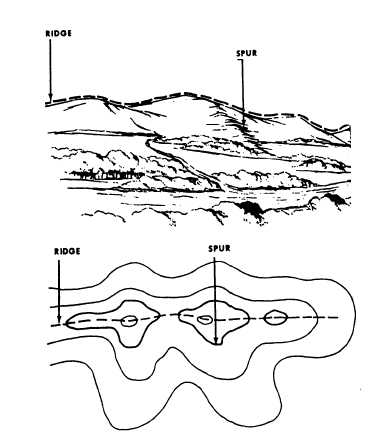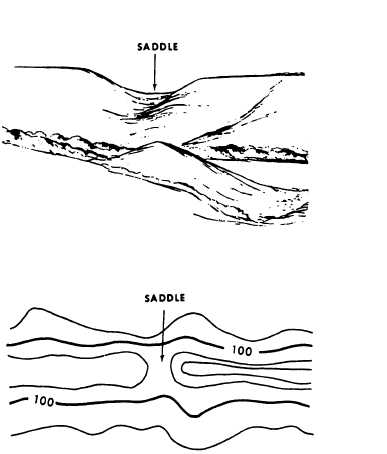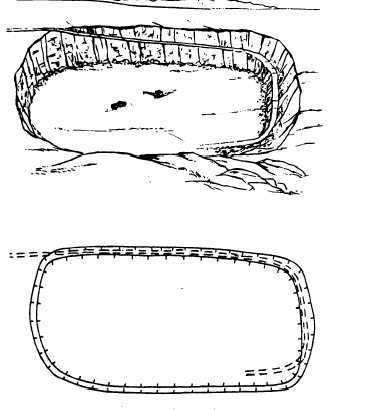Figure 8-25.-Ridge and spur.
fall of a stream, the farther each contour parallels it. The
curve of the contour crossing always points upstream.
A draw is a less-developed stream course where
there is essentially no level ground and, therefore, little
or no maneuvering room within its sides and towards
the head of the draw. Draws occur frequently along the
sides of ridges at right angles to the valley between them.
Contours indicating a draw are V-shaped with the point
of the V toward the head of the draw.
A ridge is a line of high ground that normally has
minor variations along its crest (fig. 8-25). The ridge is
not simply a line of hills; all points of the ridge crest are
appreciably higher than the ground on both sides of the
ridge.
A spur is usually a short continuously sloping line
of higher ground normally jutting out from the side of a
ridge (fig. 8-25). A spur is often formed by two roughly
parallel streams that cut draws down the side of the
ridge.
A saddle is a dip or low point along the crest of a
ridge. A saddle is not necessarily the lower ground
between the two hilltops; it maybe simply a dip or break
along an otherwise level ridge crest (fig. 8-26).
A depression is a low point or sinkhole, surrounded
on all sides by higher ground (fig. 8-27).
Figure 8-26.-Saddle.
Figure 8-27.-Depression.
8-19





